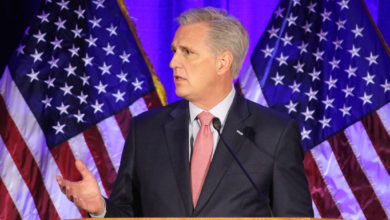A recent Brookings Institute study exposes the growing rate of poverty throughout the United States. It demonstrates that poverty affects people no matter where they live—in the cities or suburban areas.
The study found that the suburban poor outnumbered the urban poor for the first time since poverty estimates were
|
According to the report, “In 1999, the number of poor people living in cities and suburbs was roughly even, at about 10.3 million apiece. Last year, the suburban poor outnumbered their urban counterparts by about 1.2 million.”
Overall, the number of people living in poverty, using the government’s definition, rose to 38 million in 2005 versus 34 million in 1999. That is, an additional four million people were thrown into destitution in only six years.
The federal government, however, notoriously undercounts the number of poor with its definition of poverty. The government-set poverty level in 2005 was $15,577 for a family of three, a grossly inaccurate gauge of real poverty. Given the increasing cost of living, particularly in certain metropolitan areas, the actual number of people living in poverty is much greater.
A 2005 American Community Survey provides a more realistic image of poverty in the United States. Using the same standard for a family of three, the ACS estimates that 38.2 million people—13.3 percent of the U.S. population—are poor. The survey also estimates that 50.8 million people are barely scraping by.
One of the Brookings Institute’s most disturbing findings was the overall rise in child poverty. The study estimated that the child poverty rate increased from 16.6 to 18.5 percent from 1999 to 2005. It is potentially as high as 30.5 percent in cities like New York City. Many children live in single income households “where job or income losses can plunge a family into poverty.”
Poverty up in both cities and suburbs
While there is a significant increase in poverty in the suburbs, this is not merely a transfer of poor people from one area to another. The study noted that while suburban poverty may have overtaken urban poverty for the first time in sheer numbers, “the percentage of people in poverty rose in both cities and suburbs between 1999 and 2005.”
Poverty is still disproportionately concentrated in cities. “The poverty rate in large cities (18.8 percent) is still higher than it is in the suburbs (9.4 percent). But the overall number of people living in poverty is higher in the suburbs in part because of population growth.”
One of the study’s authors, Alan Berube, told the Associated Press, “There’s poverty really everywhere in metropolitan areas because there are low-wage jobs everywhere.”
The study noted that while “cities have been viewed as home to poor populations, surrounded by middle- and upper-income suburbs … neither cities nor suburbs were immune to the national trend of growing poor populations over the first half of the 2000s.” The authors added, “This ‘tipping’ of poor populations to the suburbs represents a signal development that upends historical notions about who lives in cities and suburbs.”
But what does this signal development really mean?
Poverty is inherent to capitalist society and only continues to spread. This study reveals what many workers already know—that things are getting worse for them, living conditions are declining.
More people are being forced to engage in a harsh struggle for their existence. It is in that struggle that many people begin to question the underpinning of the economic structure that oppresses them.
A national fight-back campaign is needed to stem the tide of poverty and demand real living wages for workers. Similar campaigns in the 1930s and 50s were led by communists and labor organizations to improve the condition for working people. These movements won real gains for the U.S. working class. It can happen again. The multinational working class is a powerful force for progressive change.






